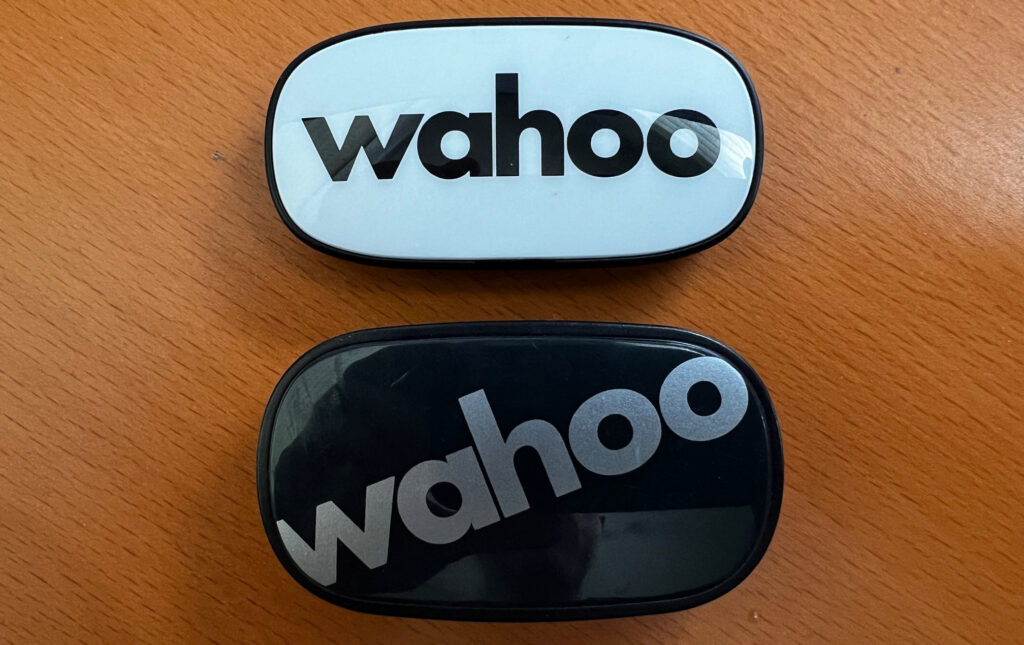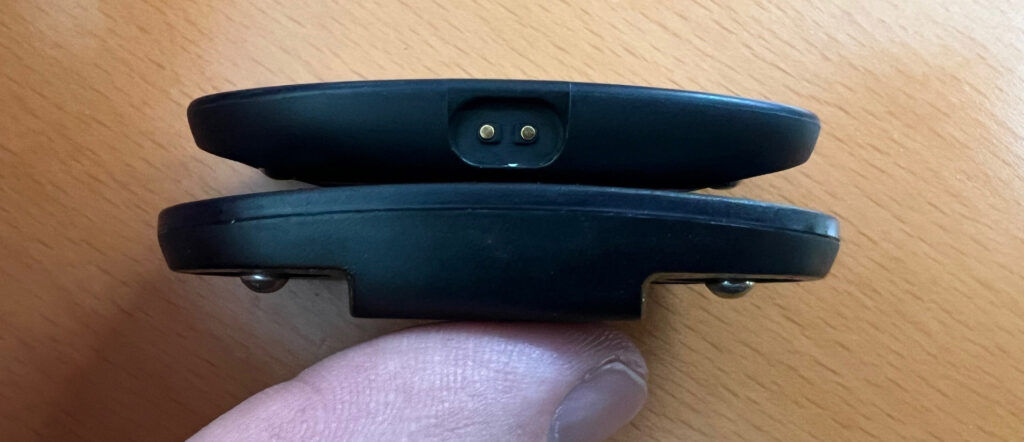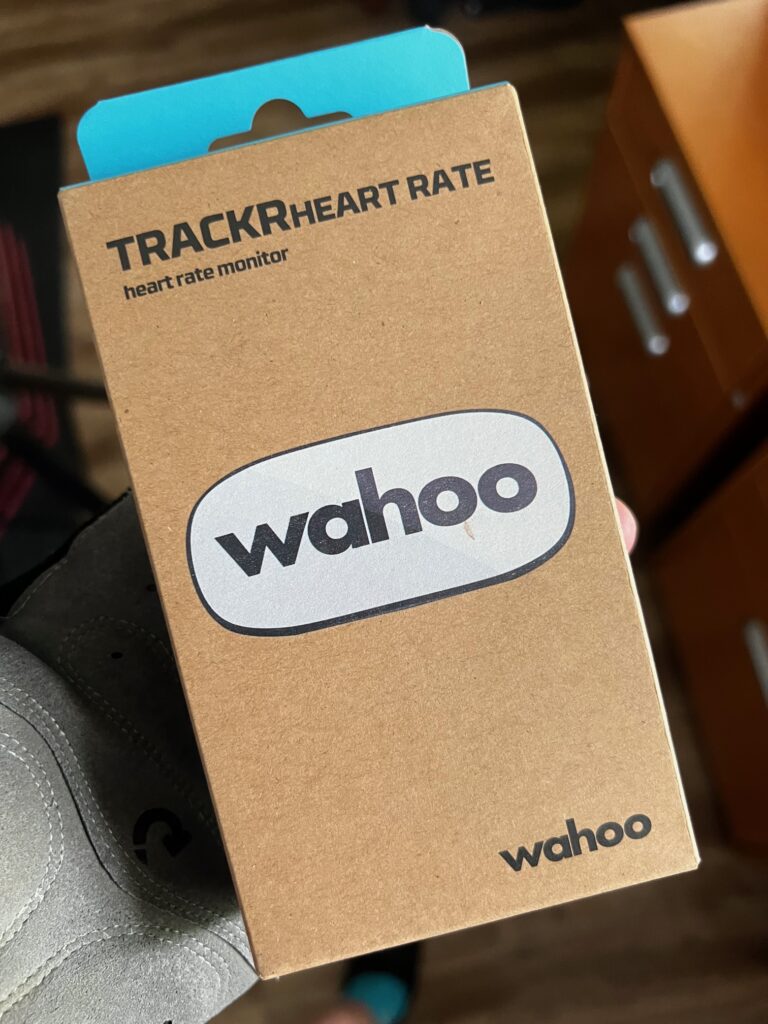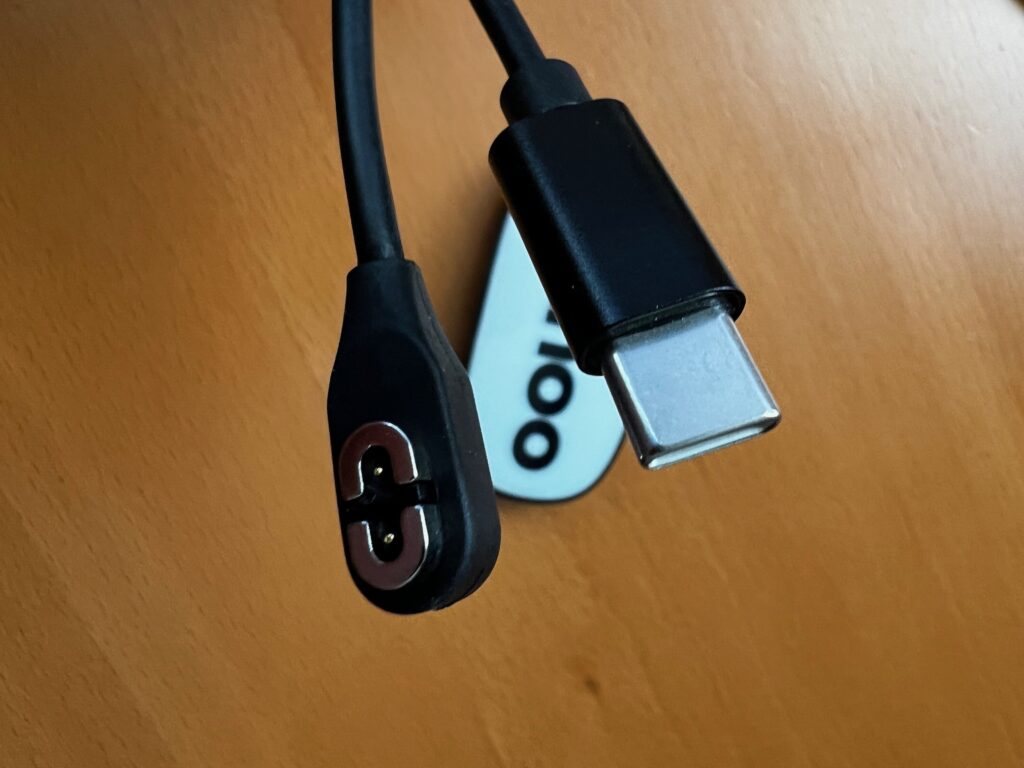Wahoo recently announced their latest generation of chest-strap heart rate monitor, named the TRACKR HEART RATE. This is the third generation of Wahoo’s TICKR line, and as the only chest strap HRM in Wahoo’s shop it replaces the 2nd generation TICKR and TICKR X. (Wahoo also sells the TICKR FIT optical armband HRM sensor.)
I’ve been a fan of Wahoo hardware for years, and that includes the original TICKR which impressed me so much that I wrote a post back in 2018 explaining why I was replacing my failed TICKR with another TICKR. (Spoiler: it’s because it lasted for 1000+ rides.)
But in recent years, I’ve been unimpressed with the second second-generation, having gone through three of them in short order before turning to another brand.
Will this new generation from Wahoo fix the sins of the previous generation? I sure hope so. Let’s dive into all things Wahoo TRACKR HEART RATE…
What’s New/Different?


Here’s how the new TRACKR HEART RATE differs from the 2nd-gen TICKR:
- Battery: Rechargeable battery (TRACKR HEART RATE) vs coin cell
- Strap Closure: Hook-closure strap vs button-closure
- Battery Life: 100 hour between charges for TRACKR HEART RATE vs 500 hours per coin cell for TICKR
- Size: the face size of the TRACKR HEART RATE is noticeably smaller (see photo above) than the TICKR – 30mm tall vs the TICKR’s 35mm. It’s also a few mm narrower.
- Weight: TRACKR HEART RATE is 12 grams with a 28-gram strap by my measurements, while the TICKR is 16 grams with a 32-gram strap
- Price: TRACKR HEART RATE retails for $89.99 while the TICKR was $49.99
Additional Features
Like the TICKR, the TRACKR HEART RATE features ANT+ and Bluetooth connectivity and supports up to three concurrent Bluetooth connections. The LED at the top-center of the HRM indicates battery status and whether the TRACKR HEART RATE is paired to devices/apps, and an IPX7 rating means you don’t need to worry about wearing the TRACKR HEART RATE in rain or sweat since it can be submerged up to 1 meter for 30 minutes.
And it’s all supported by the Wahoo app, which can deliver additional metrics like average HR, Max HR, and Total Calories.
What’s In the Box?

The TRACKR HEART RATE is a simple device, and comes in a simple package containing a simple instruction manual, the USB 3.0 charging cable, the HRM pod, and the chest strap.
Getting Set Up
After unboxing my TRACKR HEART RATE, I decided to charge it so it would be ready for testing later in the day. That’s when I ran into my first hurdle: the charging cable requires a USB-C port! I’ve got a pile of USB ports to plug into here in the office, but they’re all the older “standard” Type-A plugs. (Oddly enough, I’ve never needed a USB-C port, until the TRACKR HEART RATE arrived in my mailbox. That’s because I’m a PC guy and not a Mac guy.)

After poking around a bit, I found that one of my desktop computers had a USB-C plug in the back. Whew. No need to buy an adapter. We were in business, and with a snazzy magnetic attachment to the HRM to boot! (Charger trivia: the charging cable that ships with the TRACKR HEART RATE has the same connectors as the cable that ships with Shokz bone conduction headphones.)
After charging the unit, I strapped it on for my first test session on Zwift. That’s when I noticed the next thing: the TRACKR HEART RATE’s strap is shorter than the TICKR strap. That’s one way to save weight, I suppose! My chest is around 36″ in the area where I would strap on a HRM, and the old TICKR strap had around 6″ of extra adjustable room once when I wore it, while the new TRACKR HEART RATE strap has around 3″. Maximum length of the TICKR strap (without stretching it) is 39″, while the TRACKR HEART RATE is 35″.
It’s actually a good change if you’re a small enough human, since it saves a bit of weight. But larger riders may run into issues.
Usage Notes
I’ve used the TRACKR HEART RATE on upwards of 20 rides so far, both indoors and out. Overall I’ve found that it connects quickly and works as advertised. I’ll discuss a few particular sessions, though, as they each are illustrative in their own ways.
First: here’s a Zwift session where I recorded HR on my Scosche Rhythm R+2.0 armband as well as the TRACKR HEART RATE: https://analyze.dcrainmaker.com/#/public/bd485e3b-5f45-4b54-4f00-0710b8f90743

The TRACKR HEART RATE is in blue, while the Rhythm is in black. As we typically see with armband monitors, the Rhythm lags behind the TRACKR HEART RATE by 1-3 seconds. You don’t notice this with steady state work, but when you’re doing 30/30s like I am above, the two will often be separated by 1 or 2 beats.
Overall, though, the two monitors tracked each other quite nicely.
Next, let’s look at the one odd anomaly I’ve had with the TRACKR HEART RATE. It was on an outdoor ride, and I wasn’t wearing a second HRM, so I suppose I can’t prove that these readings were wrong. But as I chugged along at a steady low zone 3 tempo, I was surprised to look down and see my head unit displaying a heart rate in the 190s! (My max HR is right around 189.)

This happened twice, for 1-2 minutes at a time. Nothing seemed out of the ordinary – not my position on the bike, my sweat level, my effort level. There was nothing I could point to that would cause the readings to be so far off. (And no, my heart rate was not in the 190s. That would have certainly been noticeable.)
But like I said, I’ve only had that happen once. Every other activity has shown accurate heartrate as expected. Here’s one from yesterday, in fact, in which I rode up a solid climb, then took a dip in a freezing pond while wearing the TRACKR HEART RATE (for science) before coming back downhill fully chilled.

Lastly, I should mention that battery performance seems to be within specs. After charging the battery up to 100%, I’ve checked it in the Wahoo app after each ride. It seems to be dropping by around 1% per hour of use, which is right in line with the claimed 100-hour rechargeable battery life.
Comparisons and Conclusions
There are basically three big-name chest strap makers in the market today: Polar, Garmin, and Wahoo. Polar and Garmin both sell HRMs that are slightly cheaper than the TRACKR HEART RATE, and they also have more expensive versions or same-priced versions with more features, like onboard memory. (Notably, both Polar and Garmin use replaceable batteries.)
The only other chest strap HRM with a rechargeable battery that I know of is the COOSPO H9Z, although there could be others. Like other “off-brand” HRMs, the COOSPO is much cheaper than the big-name brands.
The $89.99 price point for the TRACKR HEART RATE seems quite high for what it is, especially when you consider that it replaces the $49.99 2nd-generation TICKR. Why such a massive price increase? This is the biggest weakness of the TRACKR HEART RATE, in my opinion. With the long-term durability of the TRACKR HEART RATE yet to be seen, it’s hard to recommend it above the more feature-rich and proven Polar H10 ($90 but often on sale) or even the Polar H9 ($60).
While no HRM lasts forever – especially chest strap HRMS – the second-gen TICKR earned a reputation for poor durability. I’m hoping the lack of a battery door will help the TRACKR HEART RATE to live much longer. But, as all the reviewers below agree, that remains to be seen. Here’s hoping Wahoo learned a lesson from previous TICKR versions and have released a durable HRM in the TRACKR HEART RATE.
More TRACKR HEART RATE Review Videos
GPLama
DesFit
The Run Testers
Questions or Comments?
What do you think? Will you be considering a TRACKR HEART RATE? What’s your favorite HRM, and why? Share below!